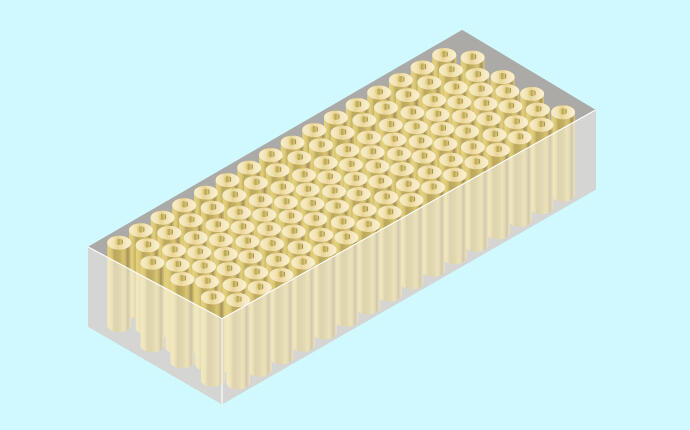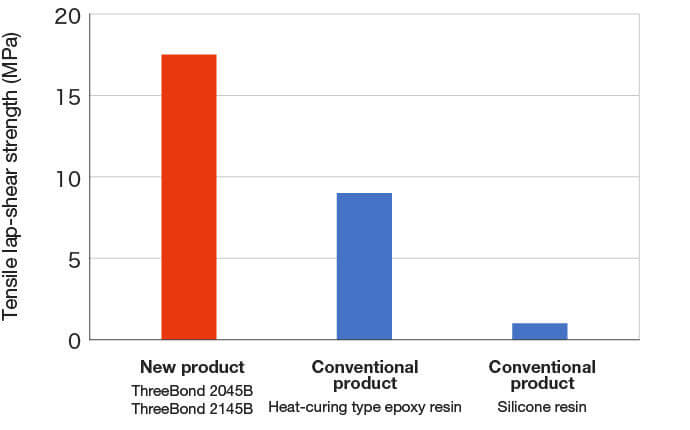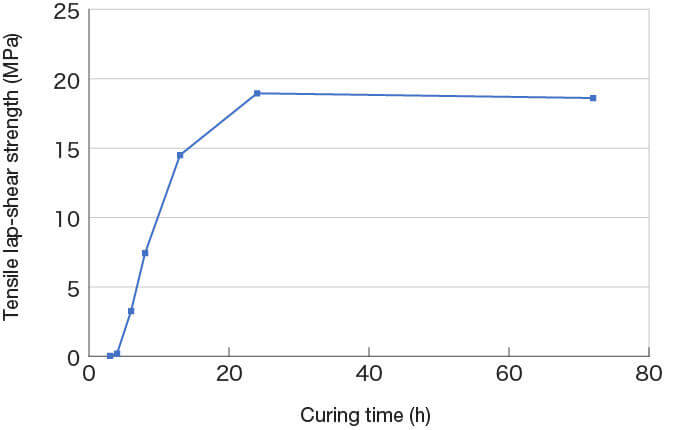
Two-part room temperature curable thermal conductive epoxy resin that dissipates heat from bonded parts
Demand for electric vehicles is rapidly expanding against the backdrop of global greenhouse gas emission reductions. Large-capacity lithium-ion batteries, predominantly used in electric vehicles, require adhesives with adhesive strength, thermal conductivity, and flame retardancy. Epoxy resin adhesives are ideal for these applications, as they provide the necessary properties. In addition, the development of a two-part room temperature curing type adhesive with good workability is sought to ensure compatibility with the heat resistance of the battery.
Therefore, the use of epoxy resin adhesive in these areas is essential. It not only provides strong adhesion but also possesses excellent thermal conductivity, enabling efficient heat dissipation from the bonded parts. Additionally, epoxy resin offers flame retardancy, ensuring safety by resisting easy ignition. Moreover, the demand for a two-part room temperature curing epoxy resin adhesive with superior workability is increasing. This adhesive allows curing without exceeding the heat resistant temperature of the battery, providing a reliable solution for electric vehicles.
Features
- Has excellent heat dissipation characteristics.
- Flame-retardant standard (vertical flame-retardant test) UL94V-0 equivalent.
- Since it is a two-part room temperature curing type, curing equipment such as a heating furnace is not required.
- High adhesive strength.
Uses
- Heat dissipation and adhesion of in-vehicle battery
- Adhesion and sealing of parts that may catch fire
- Adhesion and sealing of parts that cannot be heated
Development points
The heat-dissipating adhesive consists of a resin binder and a heat-dissipating filler. By selecting a resin binder that has adhesiveness to various materials and optimizing the filler, we have succeeded in developing a product that has heat dissipation and flame retardancy, as well as higher adhesive strength than conventional products. In addition, by using a two-part type that can be cured at room temperature, the heat source can be eliminated and the effect on parts with low heat resistance can be minimized.
You May like also: Heat Dissipation Explained: The Science and Formula Behind Efficient Cooling.
Properties and general characteristics

Adhesiveness comparison

Material: Fe/Fe (SPCC-SD)
Relationship between curing time and adhesive strength at 25°C

Material: Fe/Fe (SPCC-SD)
Mix base agent and hardener and bond the parts together. It can be temporarily fixed in about 6 hours after bonding, and reaches practical strength after 10 hours.




 #Th
#Th


 We’re Hiring!
We’re Hiring! 

 Breathe. Stretch. Connect.
This Inte
Breathe. Stretch. Connect.
This Inte

 Happy International Yoga Day!
At
Happy International Yoga Day!
At 
 ThreeBond TB3911D makes gasket removal eff
ThreeBond TB3911D makes gasket removal eff

 Bonding Strength That Lifts Off!
TB3953 & T
Bonding Strength That Lifts Off!
TB3953 & T
 Accelerating Sustainable Urban Mobility
From
Accelerating Sustainable Urban Mobility
From 


 ThreeBond 3036G delivers exceptional bonding
ThreeBond 3036G delivers exceptional bonding 

 Final Day at the EV Expo – Pune!
Final Day at the EV Expo – Pune!




 ThreeBo
ThreeBo
Post a comment